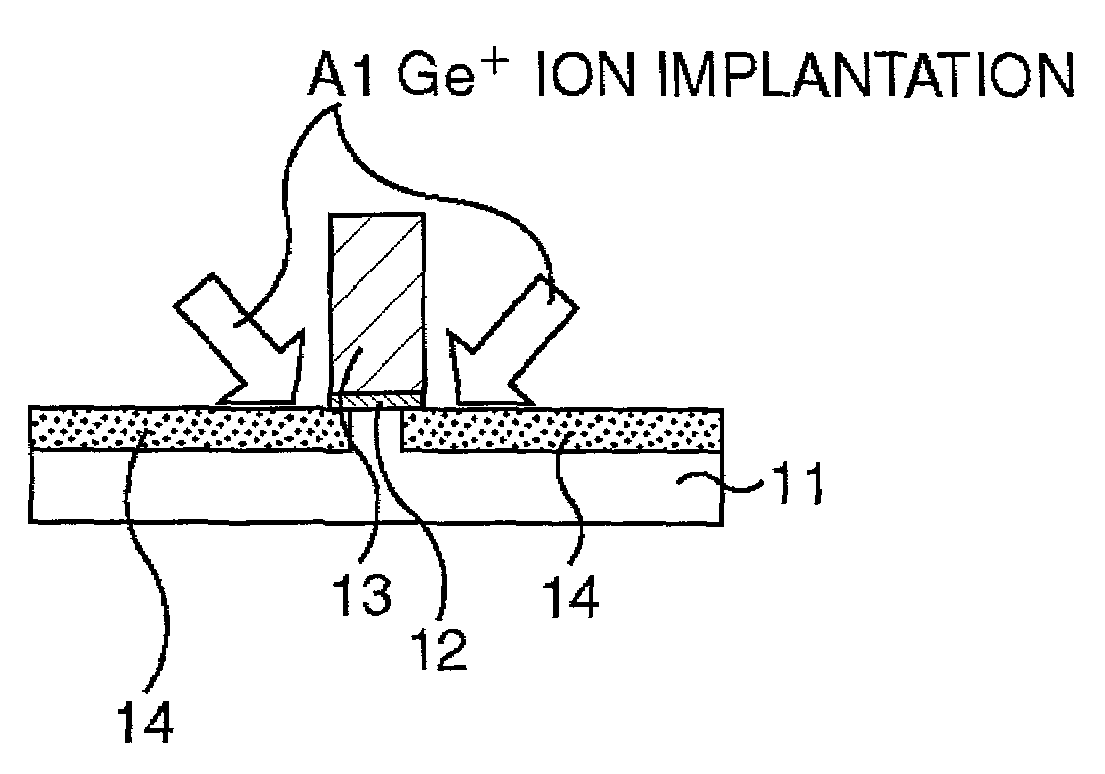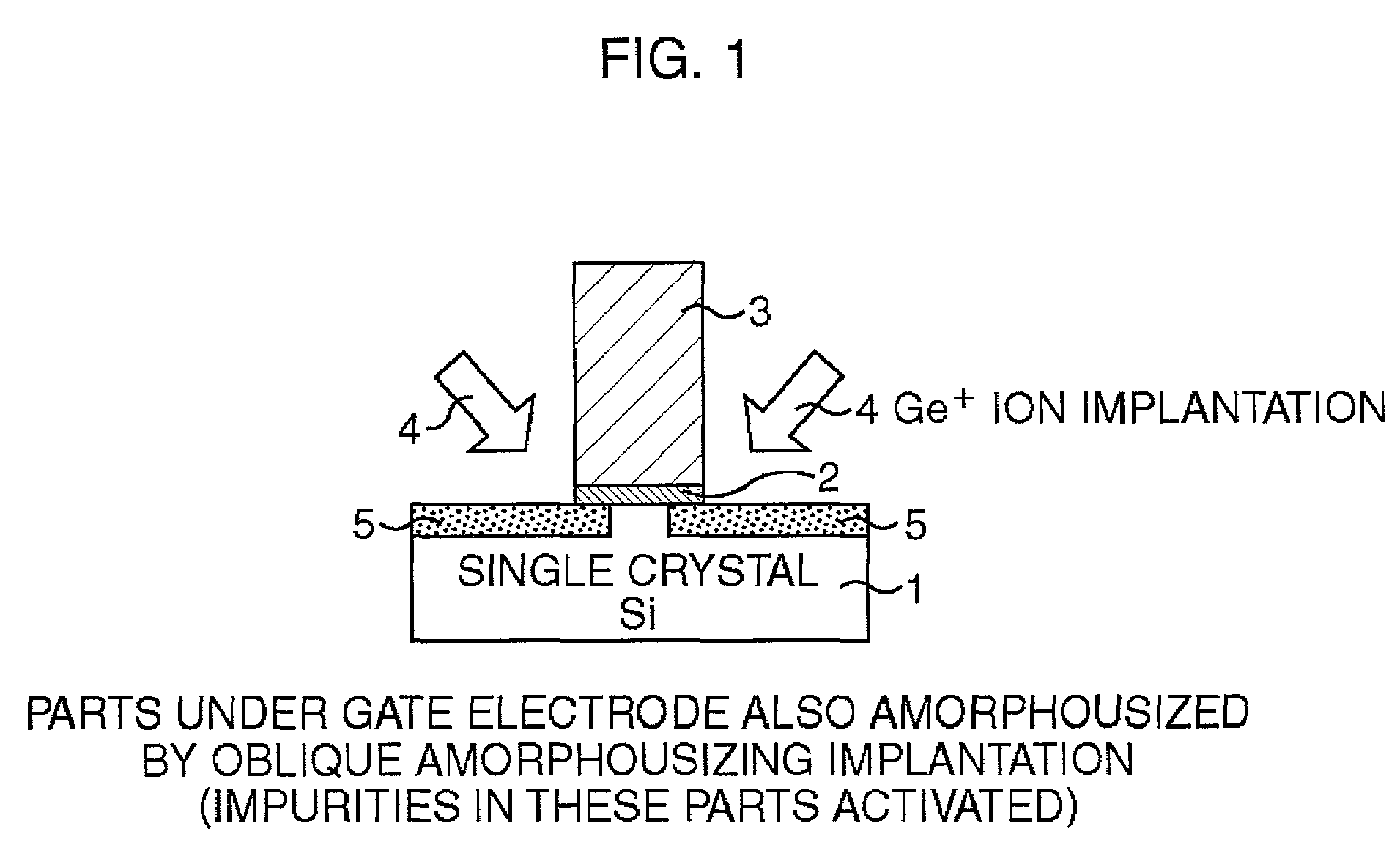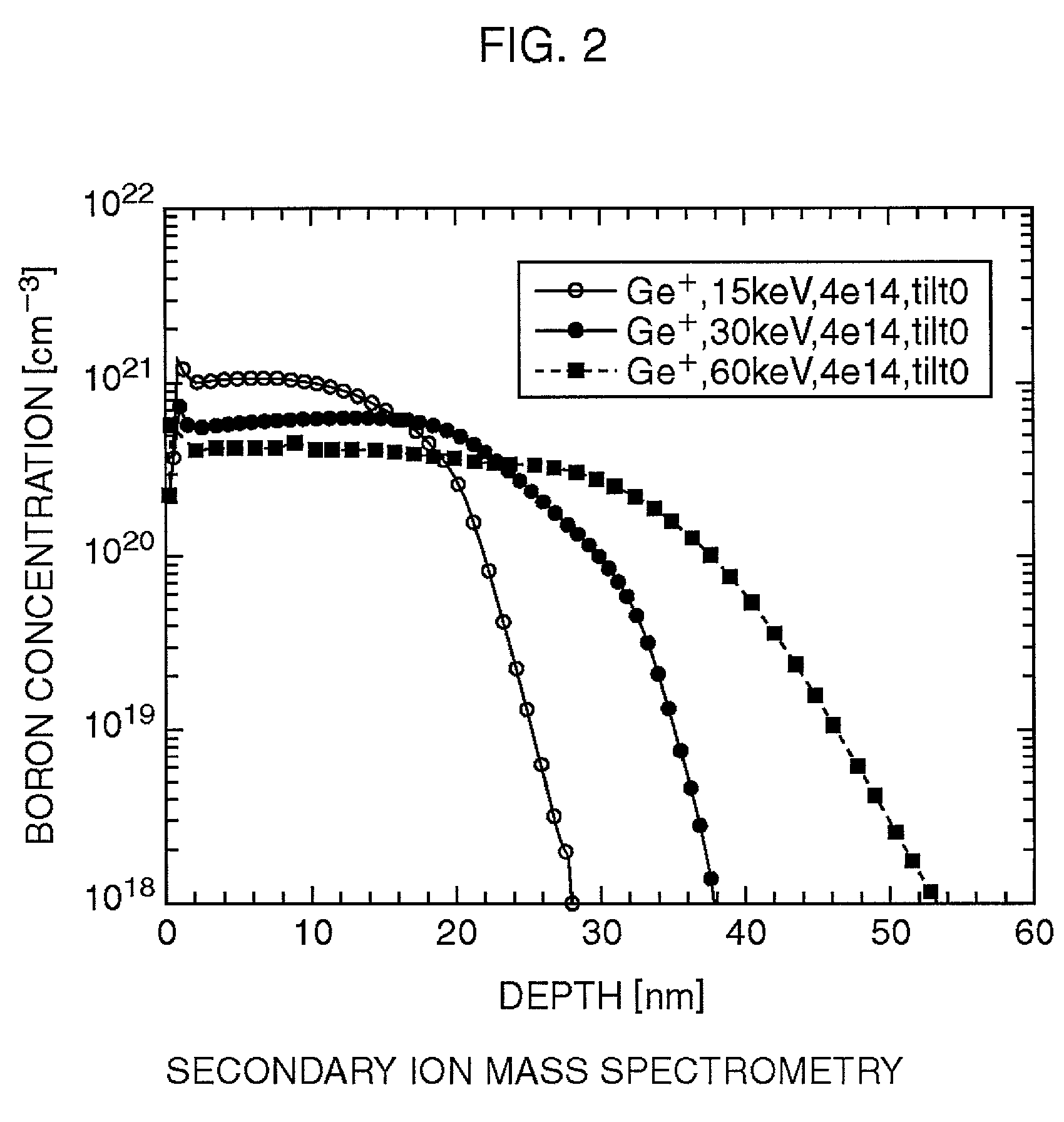Semiconductor device and manufacturing method thereof
a semiconductor and manufacturing method technology, applied in the direction of semiconductor devices, electrical appliances, transistors, etc., can solve the problems of reducing contact resistance, increasing parasitic resistance, inversely increasing parasitic resistance, etc., and achieve the effect of increasing parasitic resistan
- Summary
- Abstract
- Description
- Claims
- Application Information
AI Technical Summary
Benefits of technology
Problems solved by technology
Method used
Image
Examples
first embodiment
[0039]First, the first embodiment is explained in order of step using FIGS. 5A to 5E and FIGS. 6A to 6C.
(1) From Element Isolation to Gate Electrode Formation (FIG. 5A)
[0040]First, on a semiconductor substrate 11 made of single crystal Si, normal process of manufacturing a MOS transistor is executed which includes the formation of a not shown element isolation structure for defining an element region (a field oxide film by the LOCOS method, a local insulating film by the STI method and so on), the formation of a well structure by ion implantation of impurities, ion implantation for controlling the threshold value and so on.
[0041]Then, a gate insulating film 12 is formed on the defined element region of the semiconductor substrate 11. This gate insulating film is of one type selected from among a silicon oxide film, a silicon nitride film, a silicon oxynitride film and a metal oxide film having a dielectric constant higher than that of the silicon oxide film, or of a film having a la...
second embodiment
[0057]Next, the second embodiment is explained in order of step using FIGS. 7A to 7D.
(1) From Element Isolation to Gate Electrode Formation (FIG. 7A)
[0058]First, on a semiconductor substrate 11 made of single crystal Si, normal process of manufacturing a MOS transistor is executed which includes the formation of a not shown element isolation structure for defining an element region (a field oxide film by the LOCOS method, a local insulating film by the STI method and so on), the formation of a well structure by ion implantation of impurities, ion implantation for controlling the threshold value and so on.
[0059]Then, a gate insulating film 12 is formed on the defined element region of the semiconductor substrate 11. This gate insulating film is of one type selected from among a silicon oxide film, a silicon nitride film, a silicon oxynitride film and a metal oxide film having a dielectric constant higher than that of the silicon oxide film, or of a film having a laminated structure t...
third embodiment
[0069]Next, the third embodiment is explained in order of step using FIGS. 8A to 8D.
(1) From Element Isolation to Gate Electrode Formation (FIG. 8A)
[0070]First, on a semiconductor substrate 11 made of single crystal Si, normal process of manufacturing a MOS transistor is executed which includes the formation of a not shown element isolation structure for defining an element region (a field oxide film by the LOCOS method, a local insulating film by the STI method and so on), the formation of a well structure by ion implantation of impurities, ion implantation for controlling the threshold value and so on.
[0071]Then, a gate insulating film 12 is formed on the defined element region of the semiconductor substrate 11. This gate insulating film is of one type selected from among a silicon oxide film, a silicon nitride film, a silicon oxynitride film and a metal oxide film having a dielectric constant higher than that of the silicon oxide film, or of a film having a laminated structure th...
PUM
 Login to View More
Login to View More Abstract
Description
Claims
Application Information
 Login to View More
Login to View More - R&D
- Intellectual Property
- Life Sciences
- Materials
- Tech Scout
- Unparalleled Data Quality
- Higher Quality Content
- 60% Fewer Hallucinations
Browse by: Latest US Patents, China's latest patents, Technical Efficacy Thesaurus, Application Domain, Technology Topic, Popular Technical Reports.
© 2025 PatSnap. All rights reserved.Legal|Privacy policy|Modern Slavery Act Transparency Statement|Sitemap|About US| Contact US: help@patsnap.com



